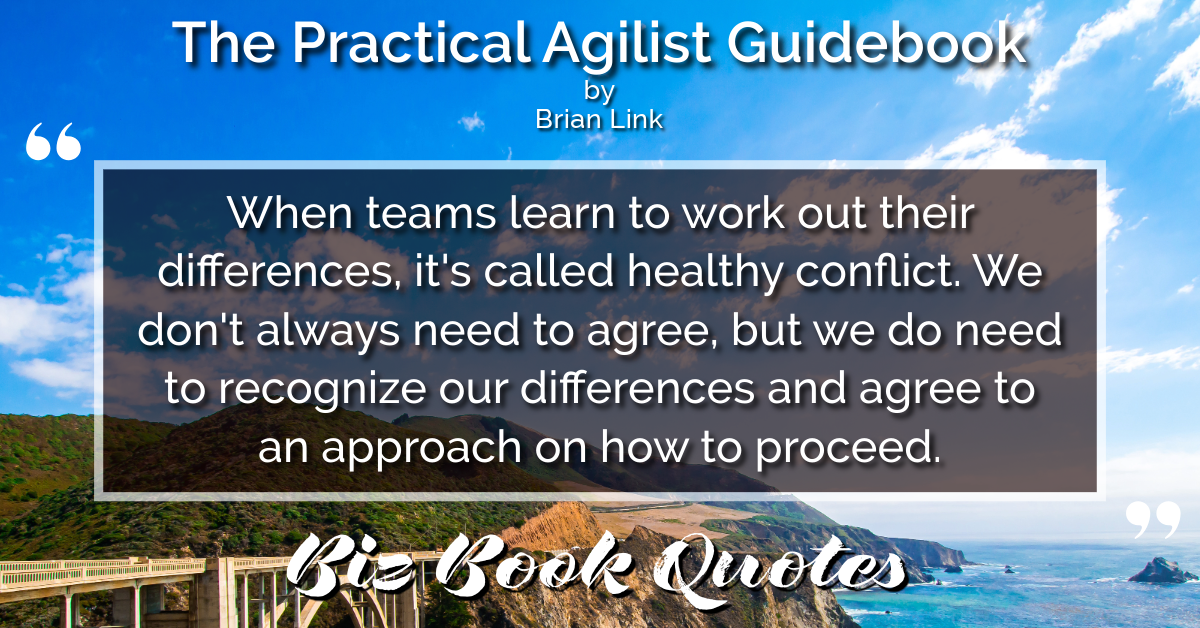|

|
The Practical Agilist Guidebook:
One of the most important things to having a high performing agile team is psychological safety. It’s perhaps the most important ingredient for success in agile.
|
052 |
|

|
The Practical Agilist Guidebook:
Every group has greater potential when every team member participates, no matter the skill level or amount of experience.
|
054 |
|

|
The Practical Agilist Guidebook:
…team members that have safety with their colleagues are not afraid of failure.
|
055 |
|

|
The Practical Agilist Guidebook:
…if a manager learns to ask questions and lead with empathy, they create a very important opportunity for the team member to open up, share, and even solve problems on their own and grow.
|
056 |
|

|
The Practical Agilist Guidebook:
…it’s just as important to develop people as it is to generate short term value for the company.
|
056 |
|

|
The Practical Agilist Guidebook:
…when we express some level of vulnerability with each other, it is a building block for establishing trust between two individuals.
|
057 |
|

|
The Practical Agilist Guidebook:
The language a boss chooses is paramount.
|
058 |
|

|
The Practical Agilist Guidebook:
No one likes to feel like a very small cog in a very big machine. If someone feels like their work doesn’t matter, it’s harder to be prideful or enjoy what they do.
|
074 |
|

|
The Practical Agilist Guidebook:
When teams learn to work out their differences, it’s called healthy conflict. We don’t always need to agree, but we do need to recognize our differences and agree to an approach on how to proceed.
|
076 |
|

|
The Practical Agilist Guidebook:
Every individual should have some sort of learning goal.
|
088 |











